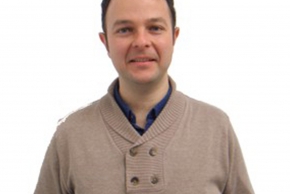Extensions of cgFEM: Discontinuous Galerkin formulation and artificial intelligence for speed up simulations.
Abstract
During the last years, the research group of Computational Mechanics at I2MB-UPV has been working in the development of an immersed boundary method (IBM) called the Cartesian grid finite element method (cgFEM). CgFEM is a very efficient numerical simulation methodology thanks to the use of Cartesian meshes independent of the geometry and to a hierarchical data structure. These features make cgFEM an efficient tool for several applications.
CgFEM is at the basis of new optimization procedures which are presented in the seminar. First of all, a cell-based topology optimization procedure is presented. This process allows a high-resolution topology optimization process at a low cost thanks to the possibility of decoupling the problem domain in cells, where the topology optimization, speeded up thanks to AI, is carried out. The structural continuity is preserved thanks to the use of an equilibrated traction field. Also, a new framework for the optimization of structures is presented where the gap between topology and geometry optimization is filled thanks to the use of AI tools. Continuing with design optimization, a new framework for obtaining a predesign of a component is stablished. The process considers the know-how of the company, acquired by means of AI tools.
Regarding to medical image applications, cgFEM has demonstrated its advantages for simulation the structural bone behaviour whit respect to standard simulation tools. In this context, a real-time application for obtaining the vertebra structural behaviour considering a tumour is obtained. This application makes use of a Reduced Order Model of the vertebra considering any possible tumour.
Finally, thanks to the geometry mesh independency of cgFEM, a Discontinuous Galerkin framework has been implemented. The advantage in this context with respect to the standard simulation tools is that high order meshes are trivial. However, new stabilization tools are required. Despite of that, the results shows a high accuracy and the possibility of handling complex domains easily.
